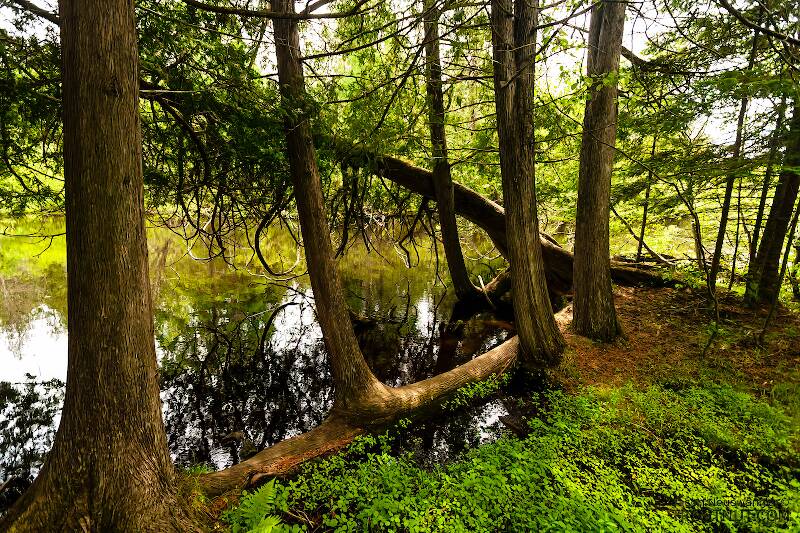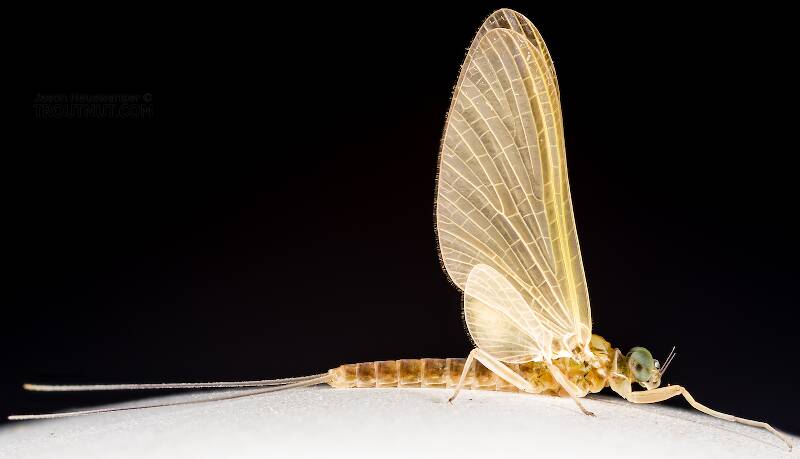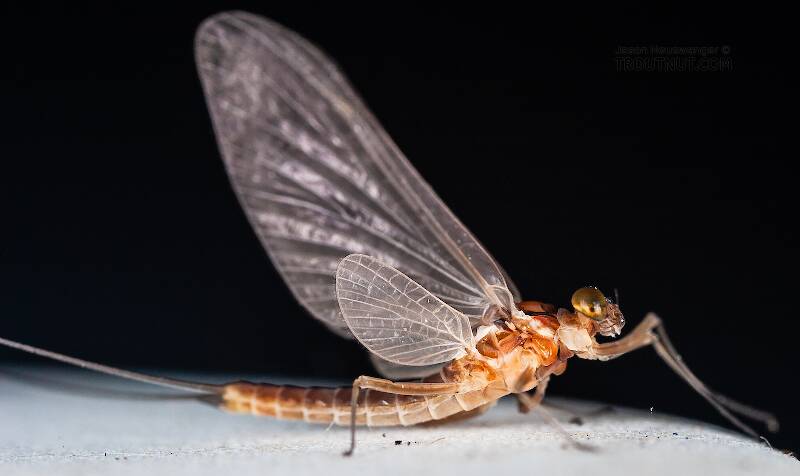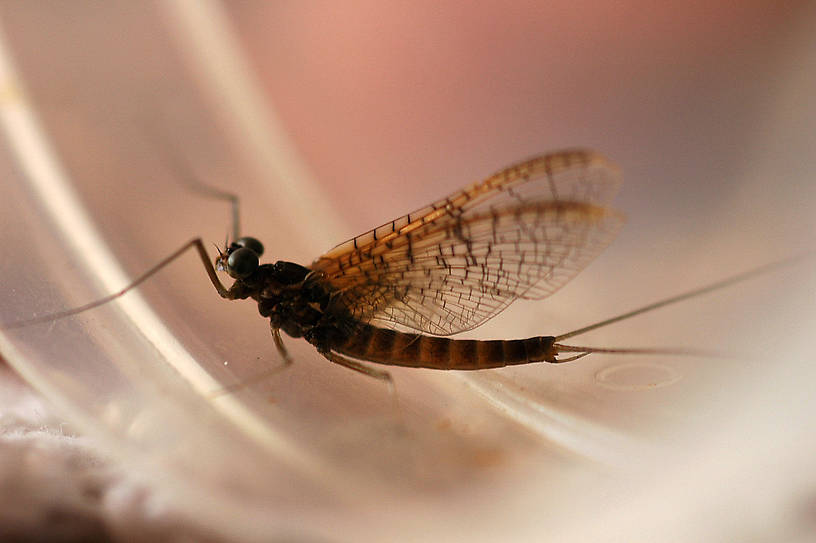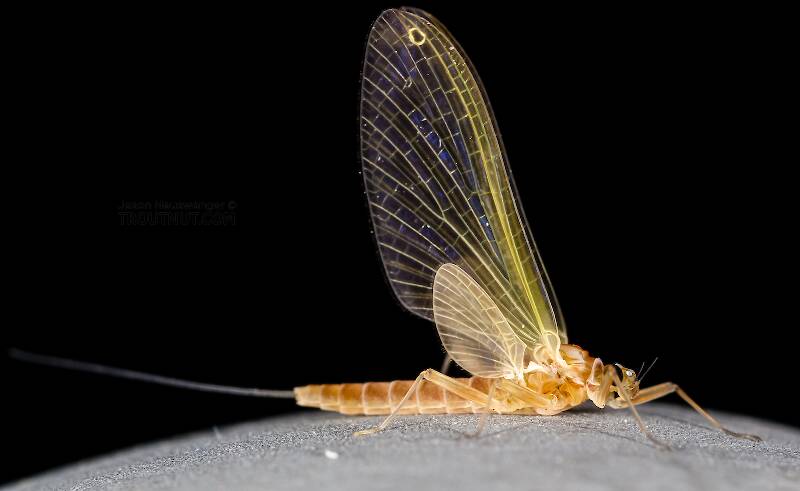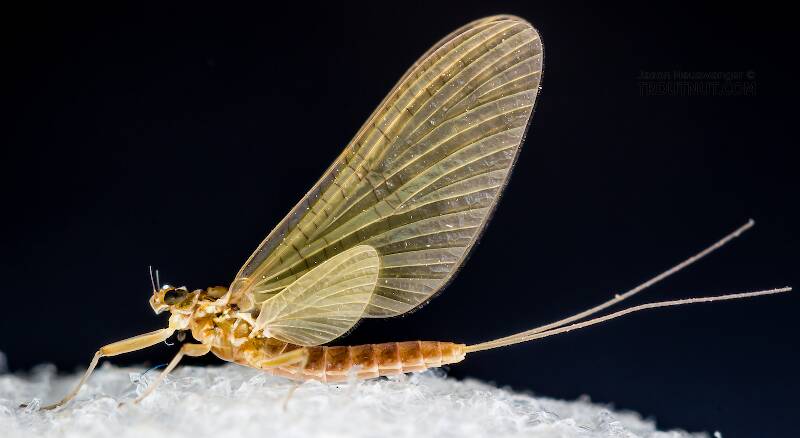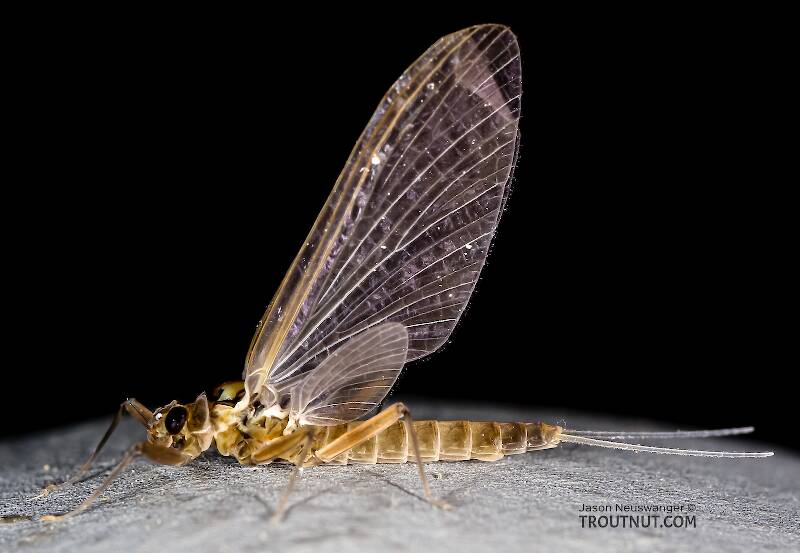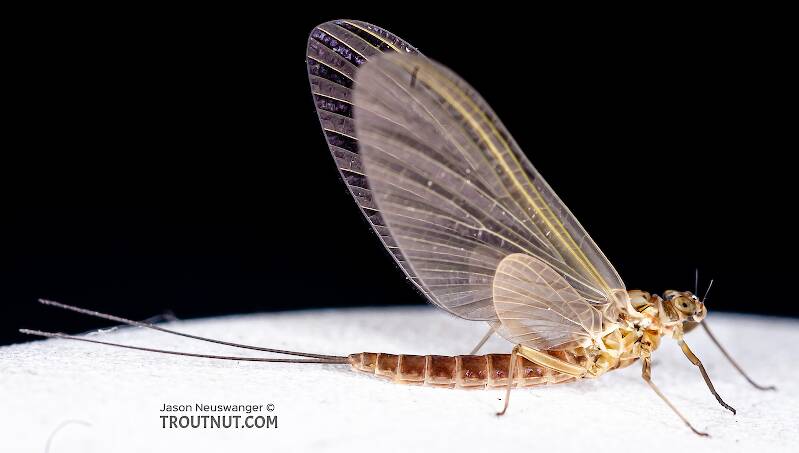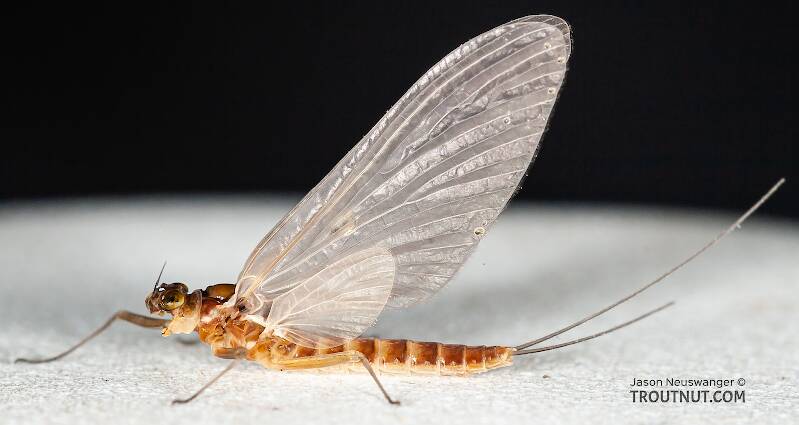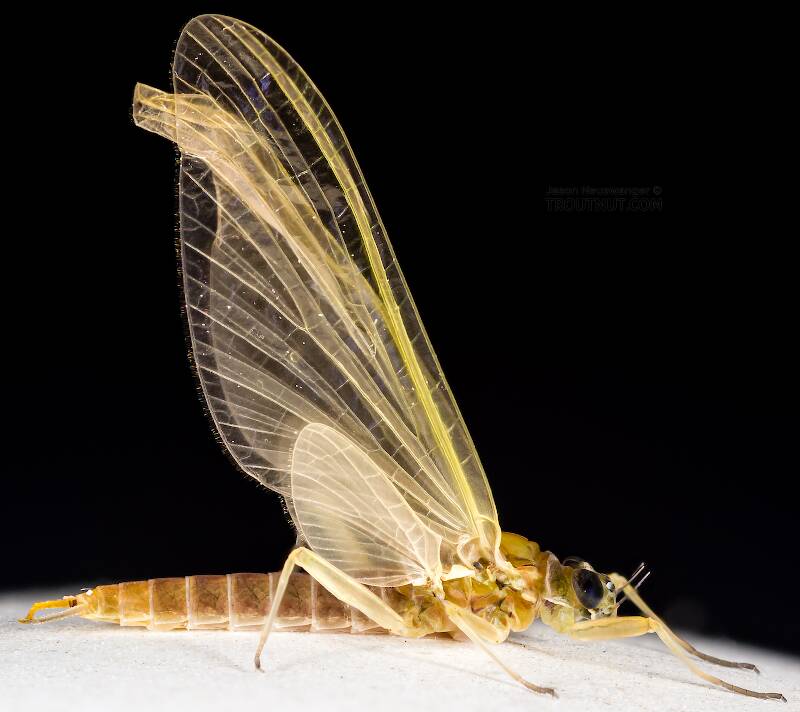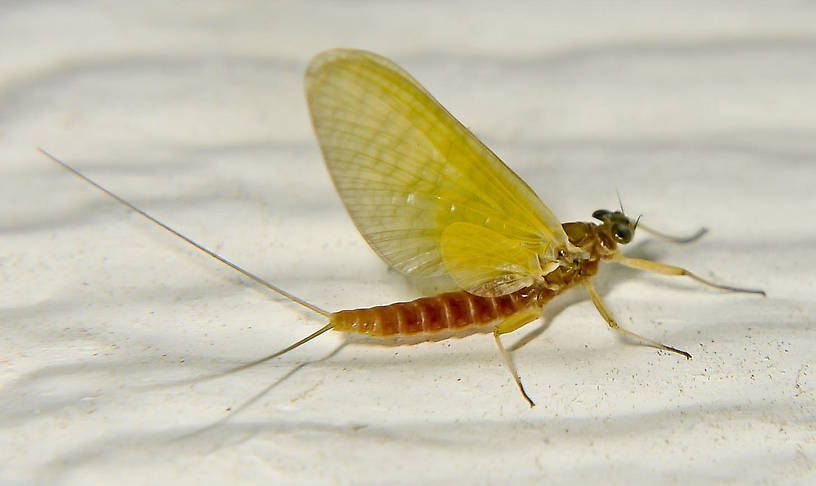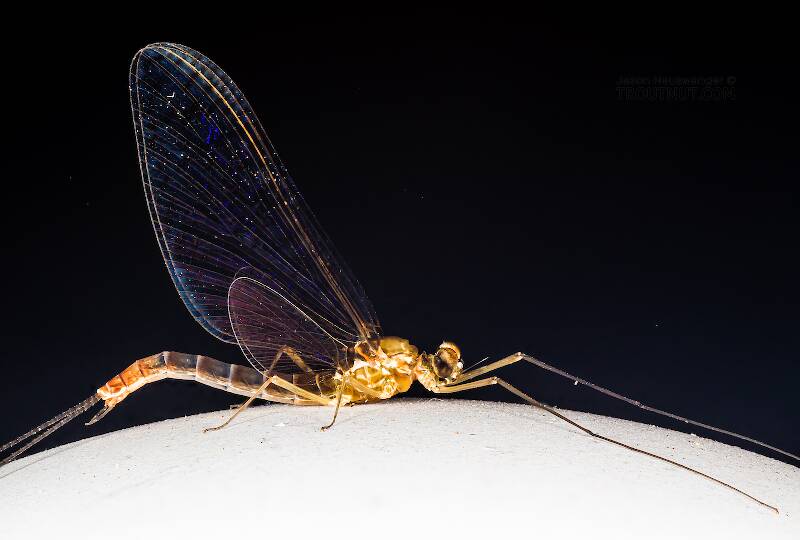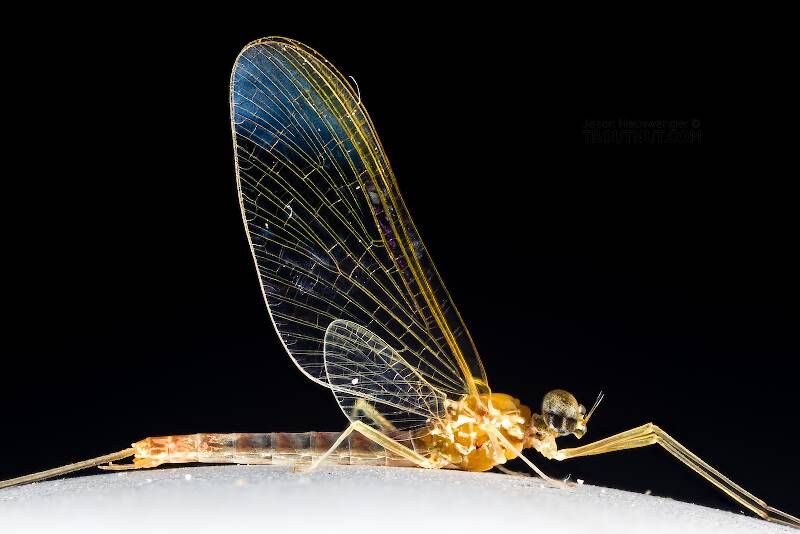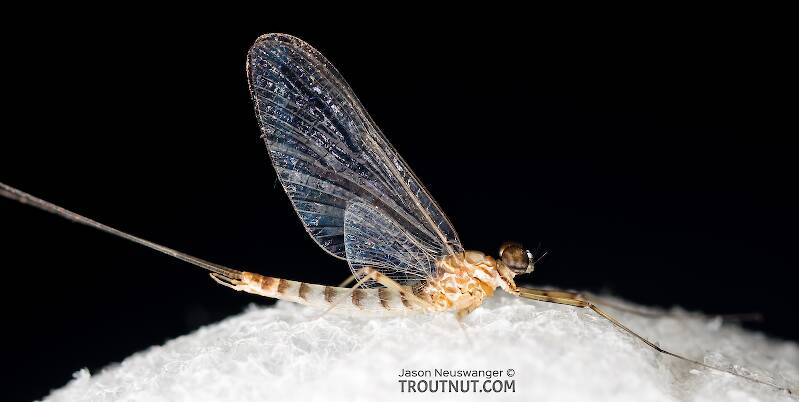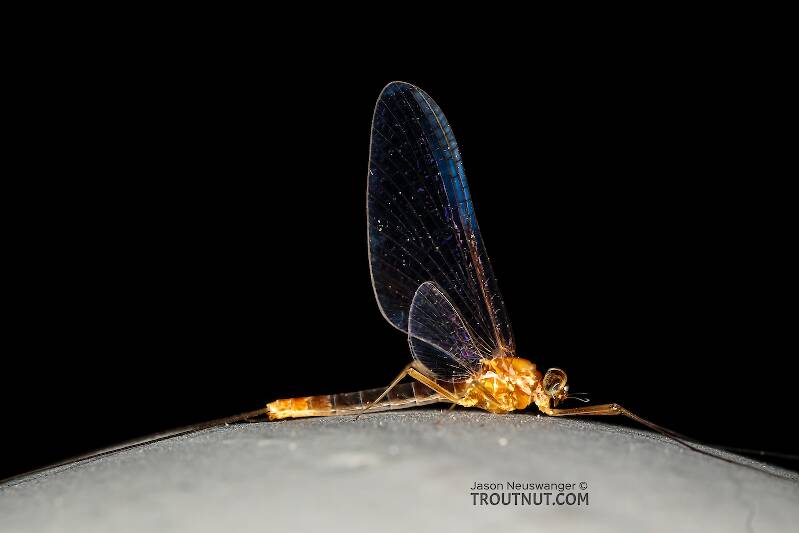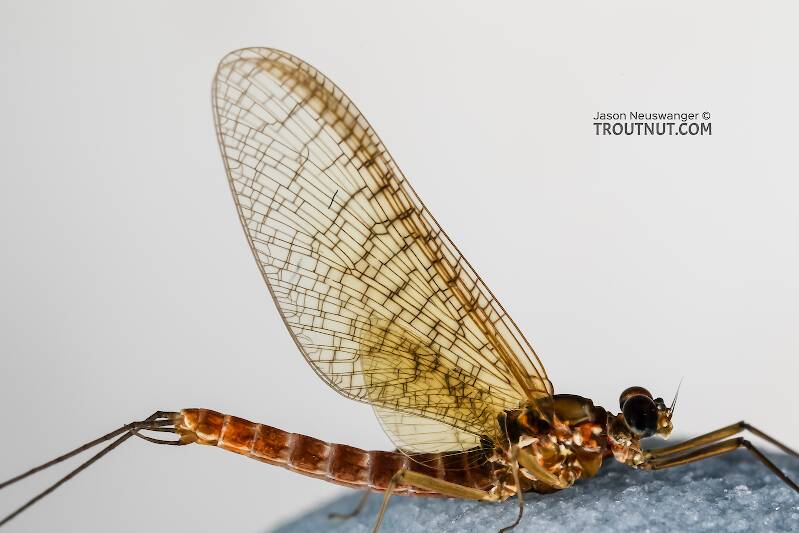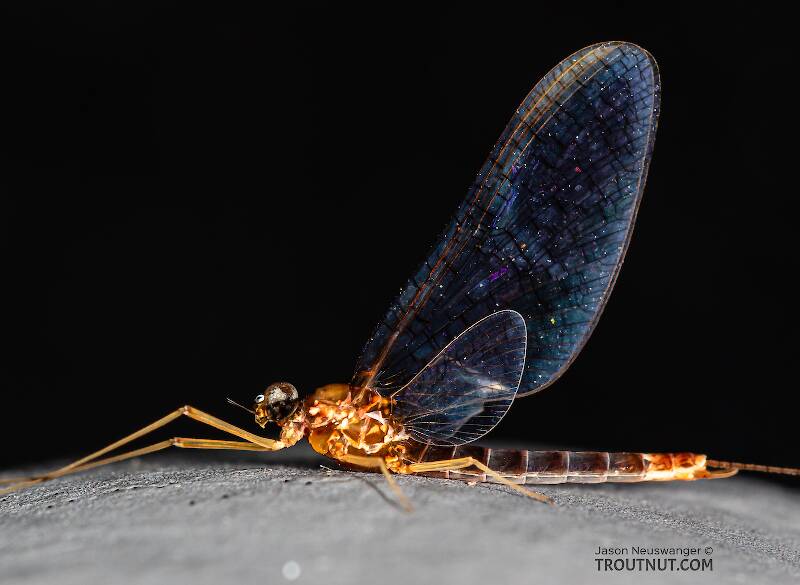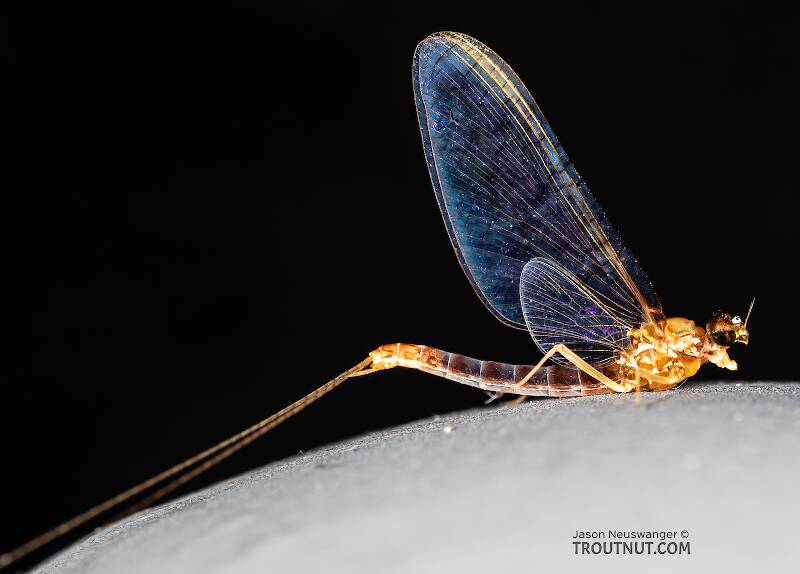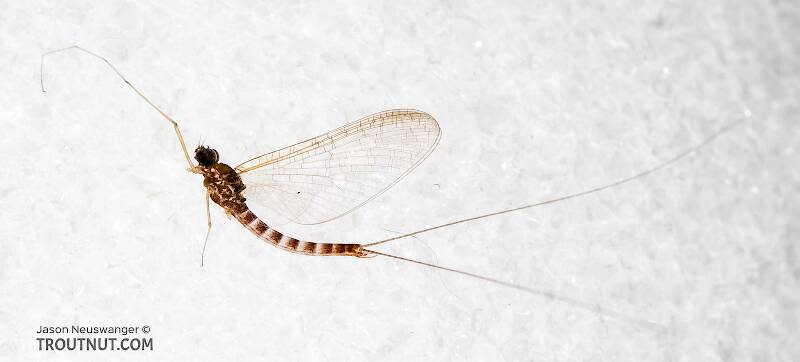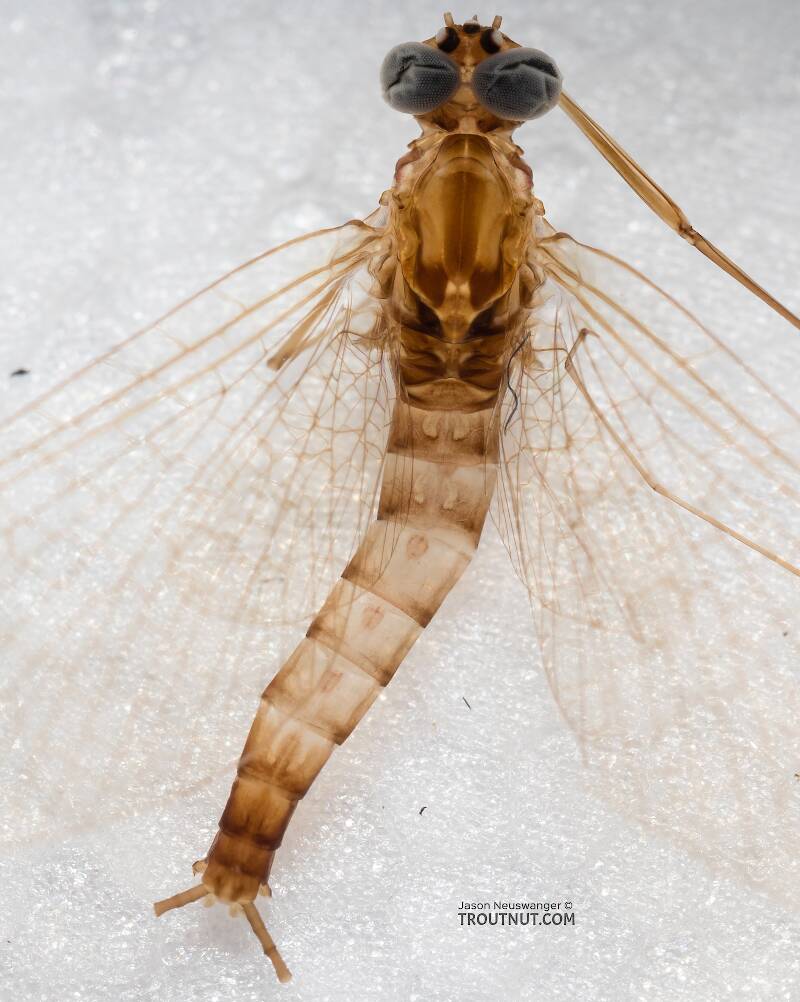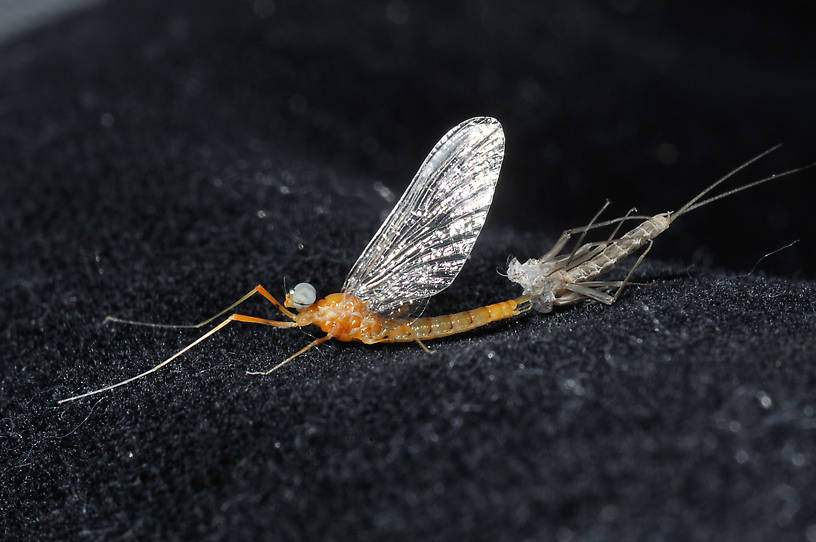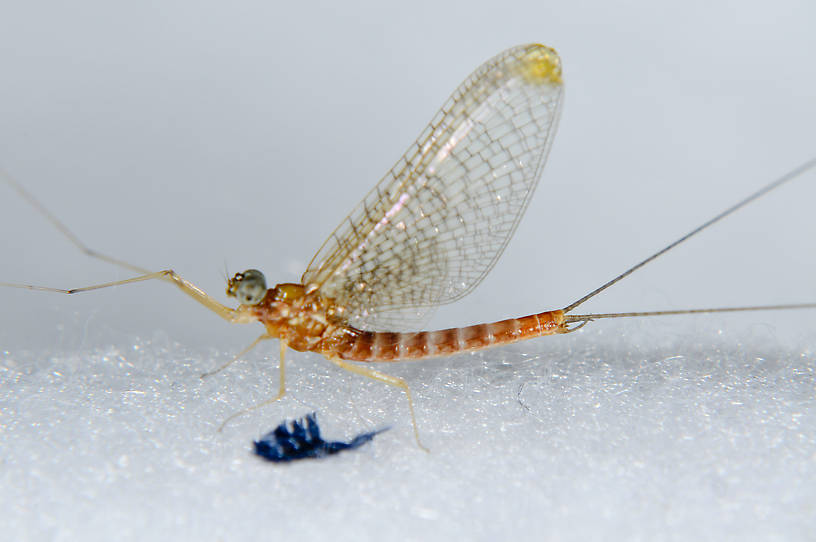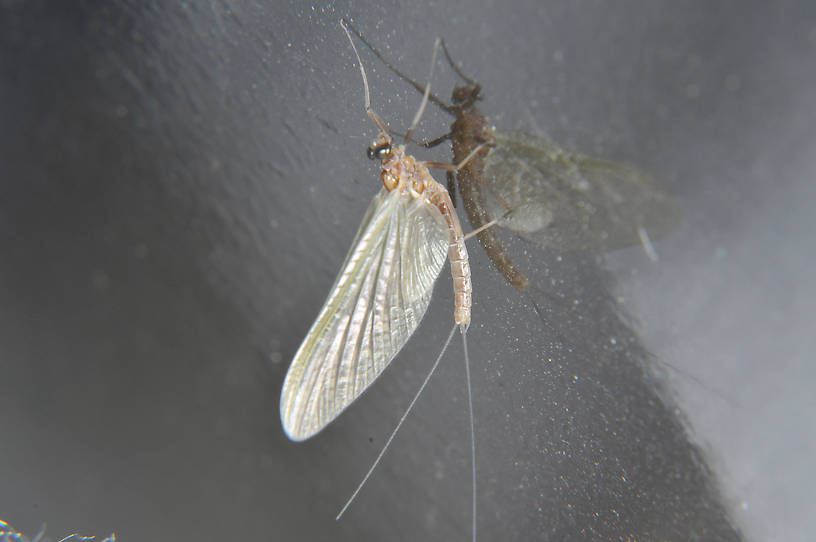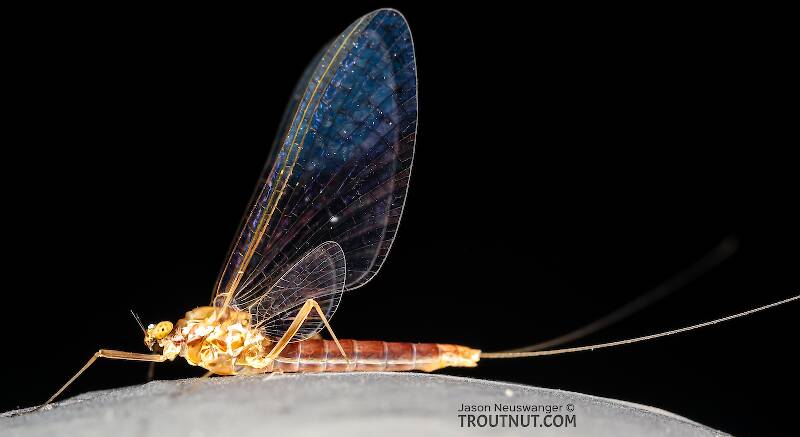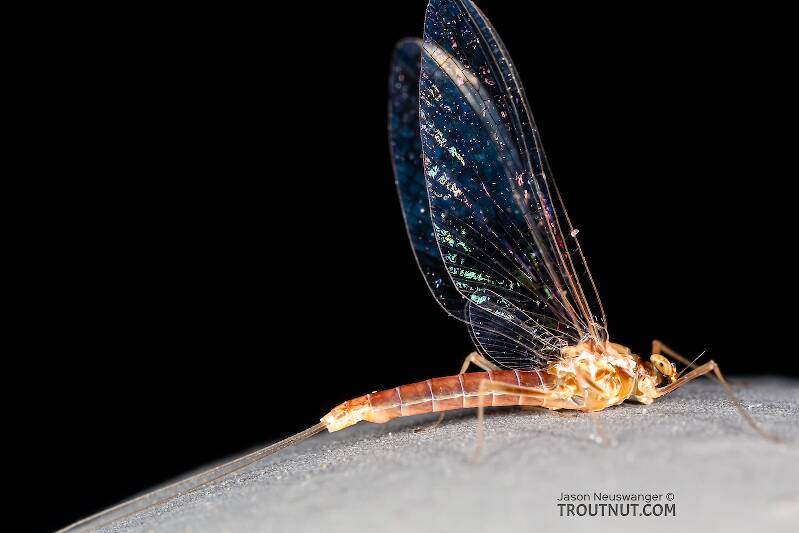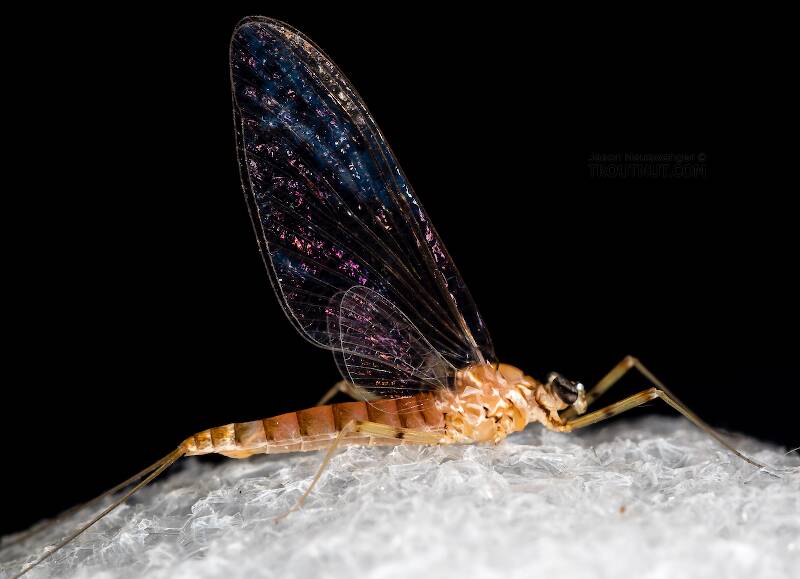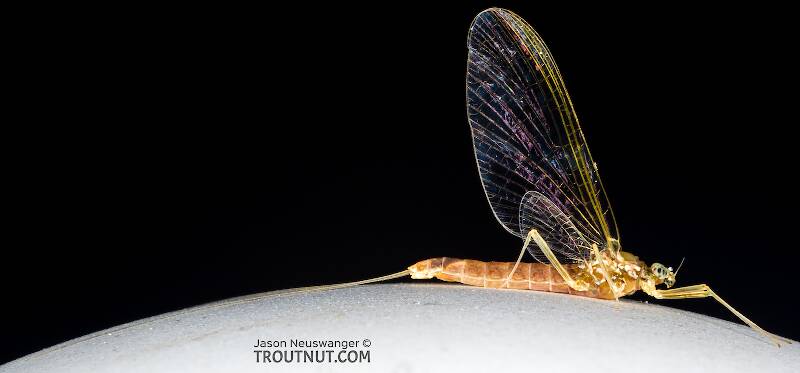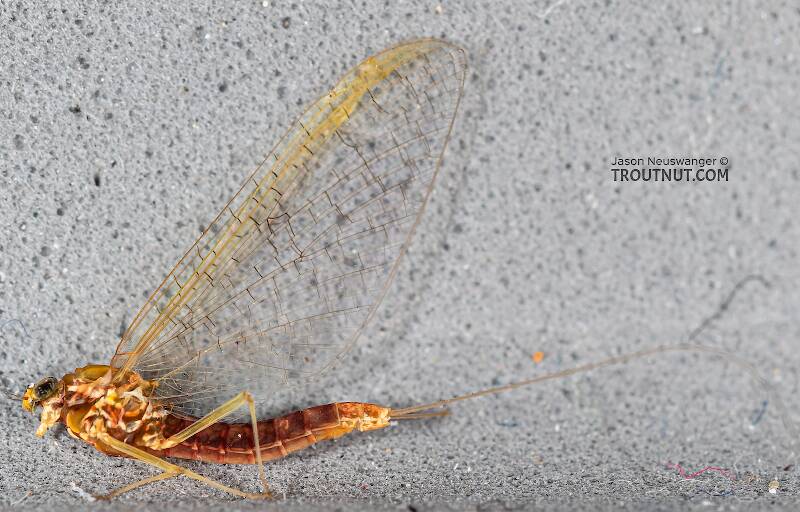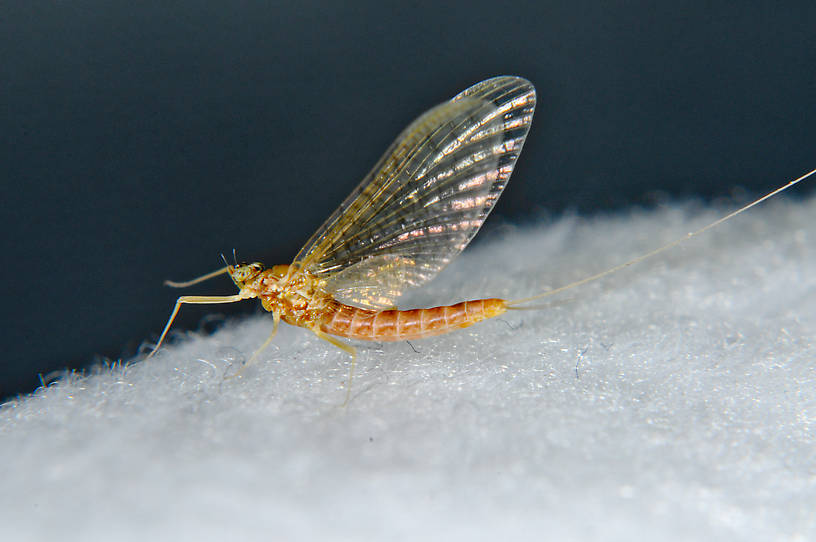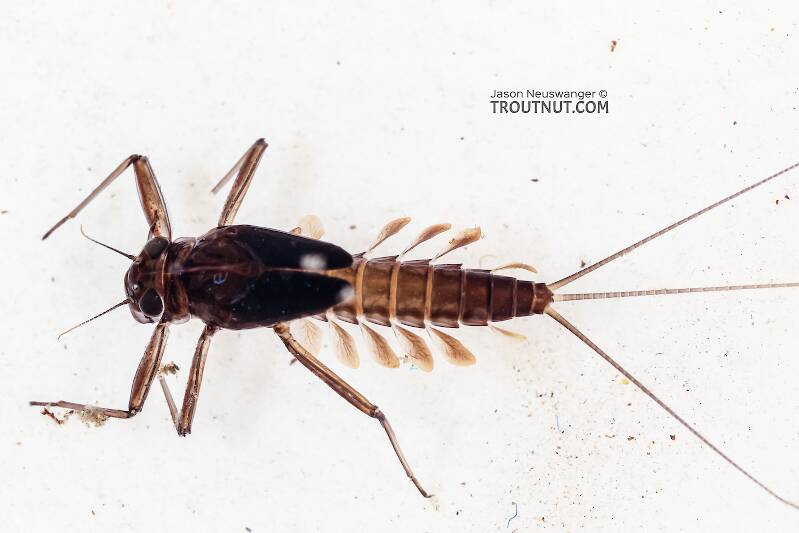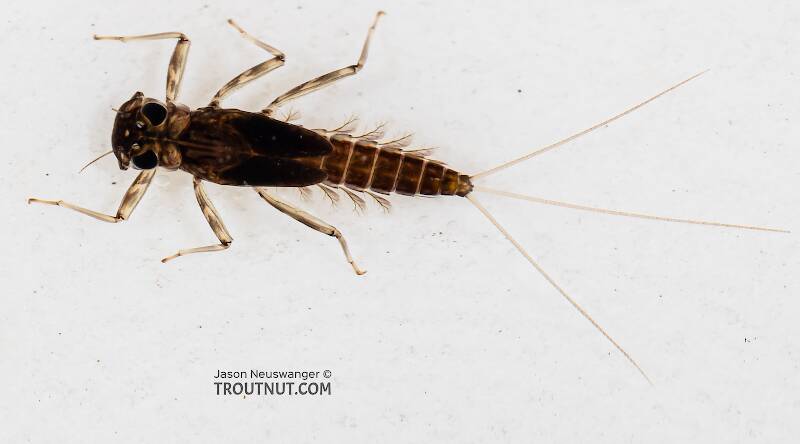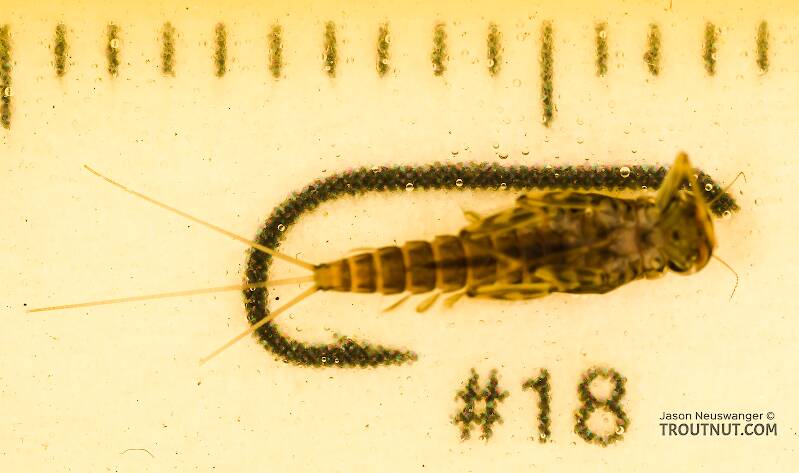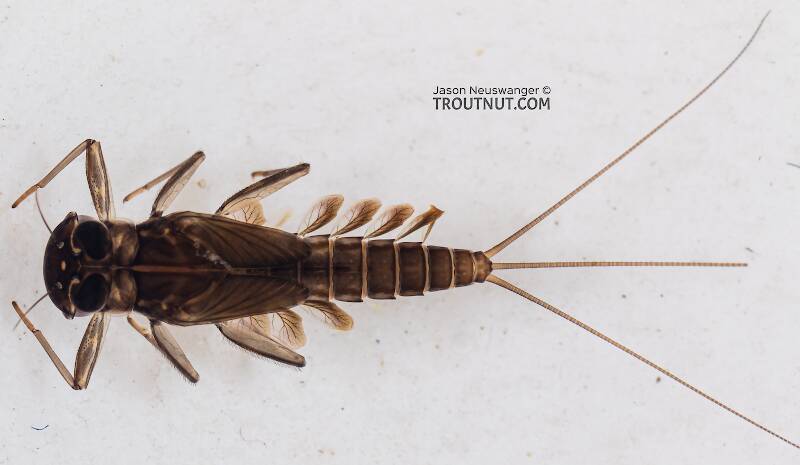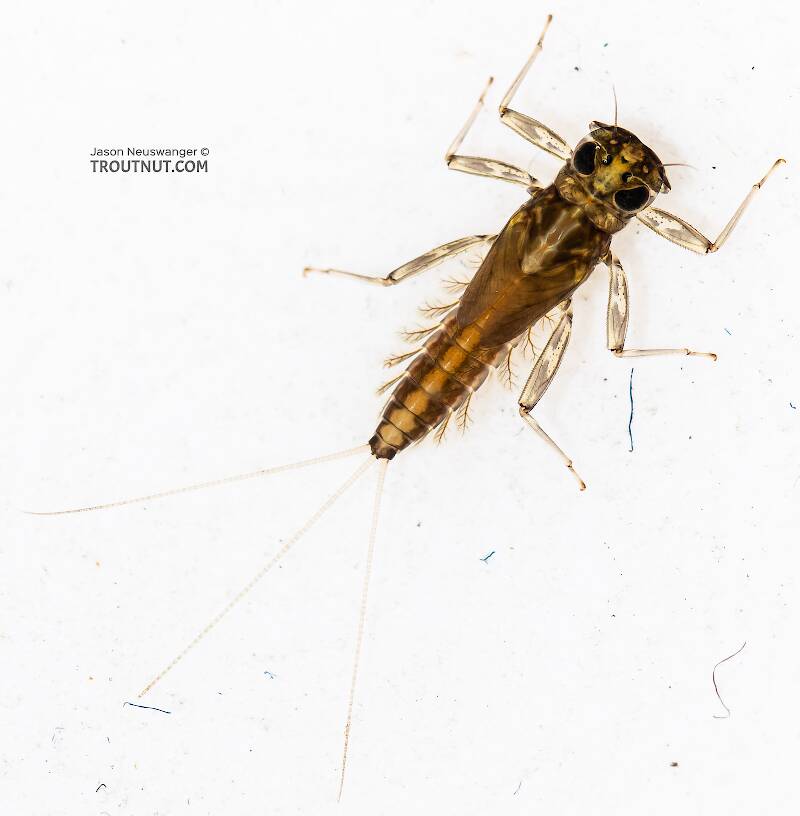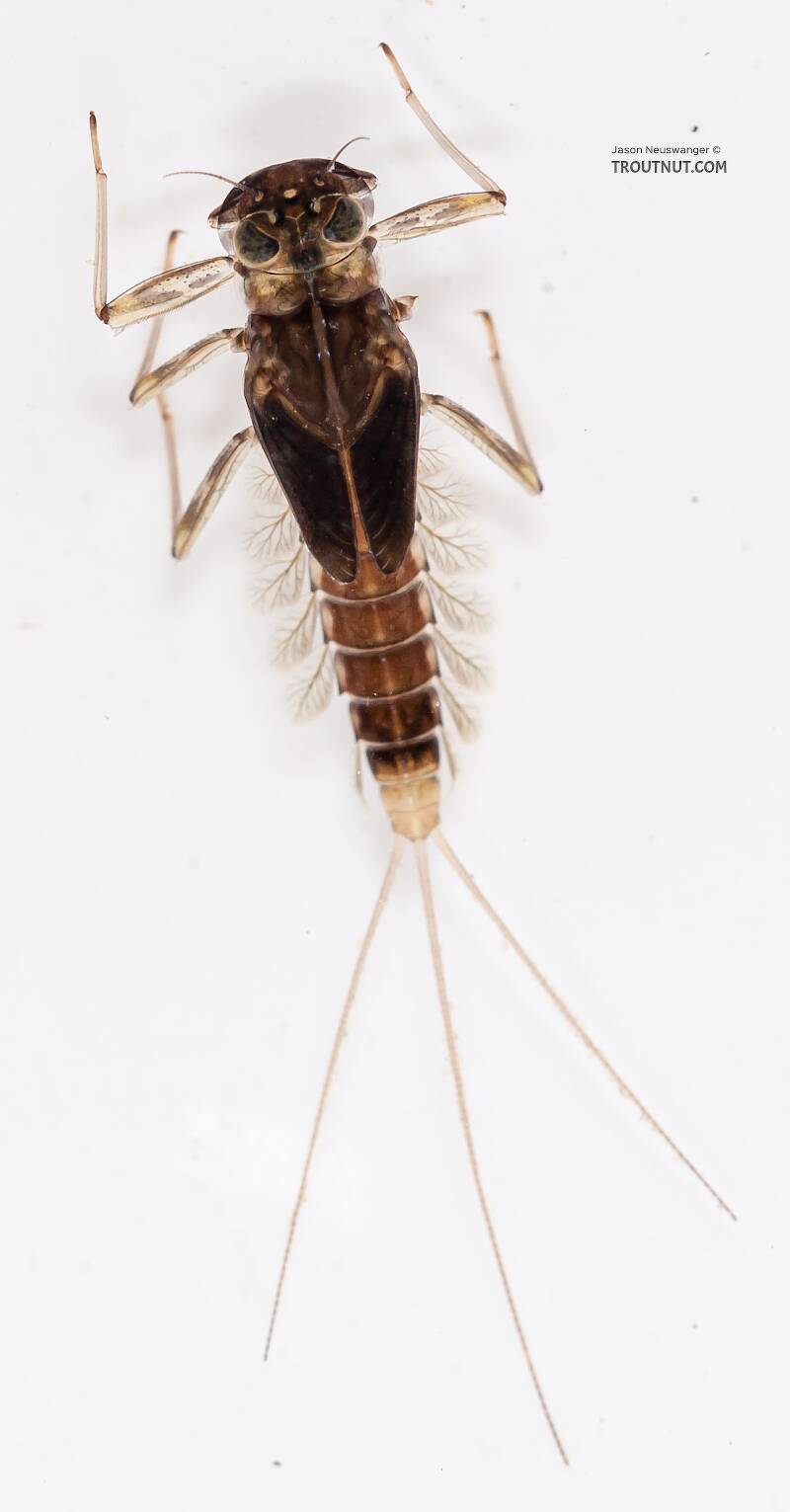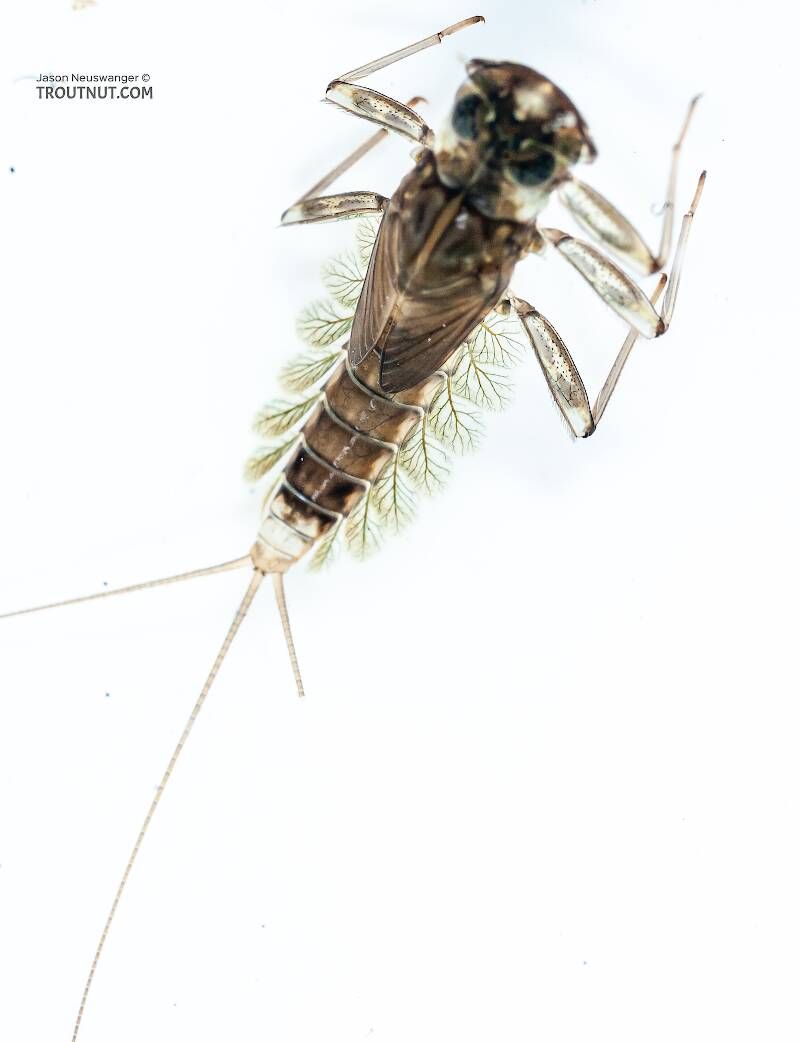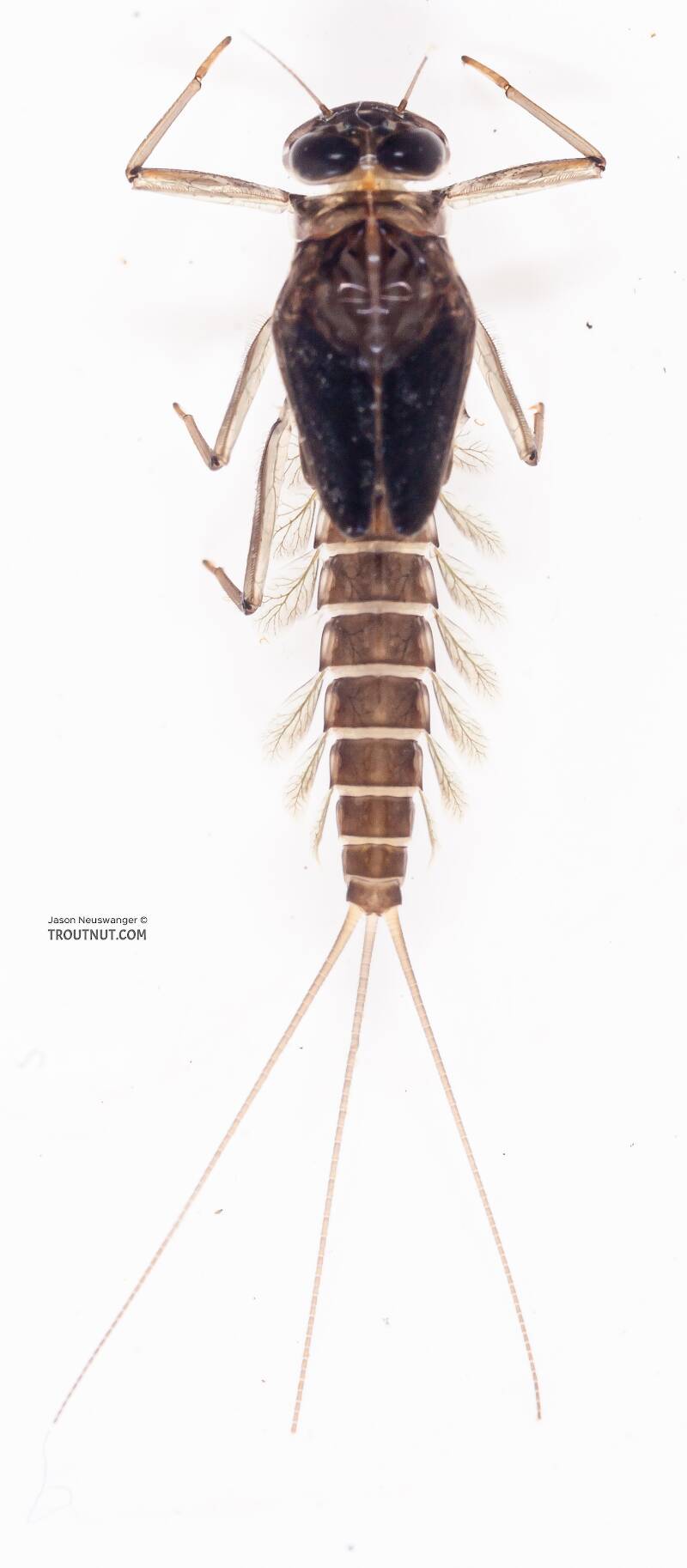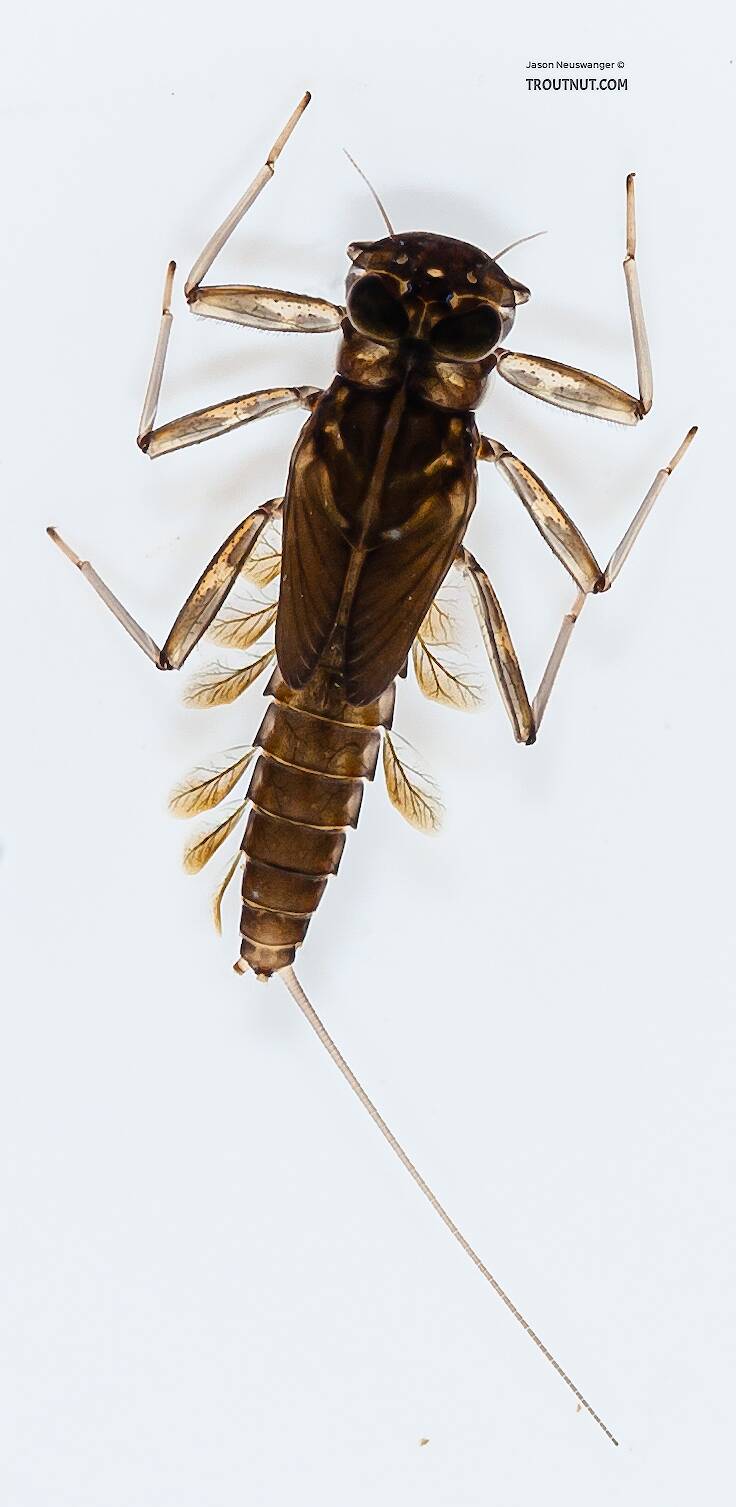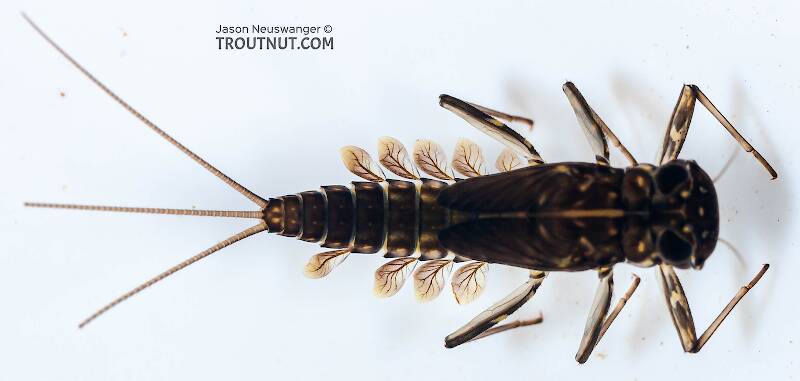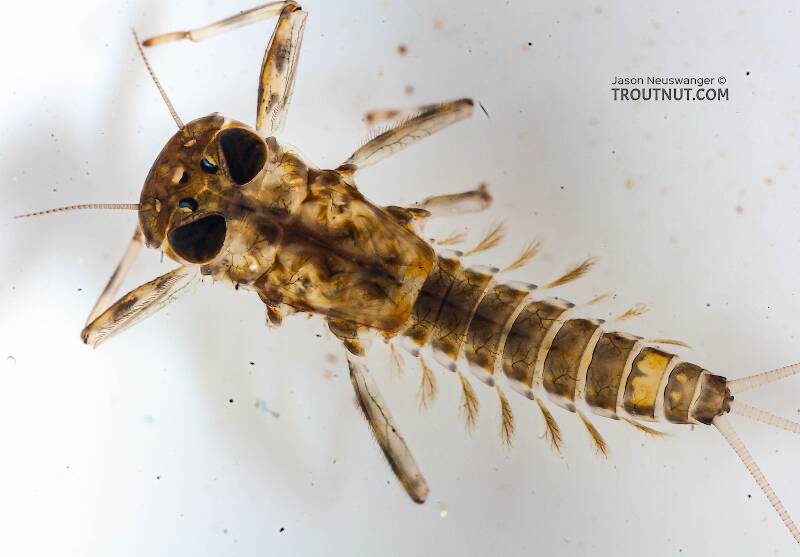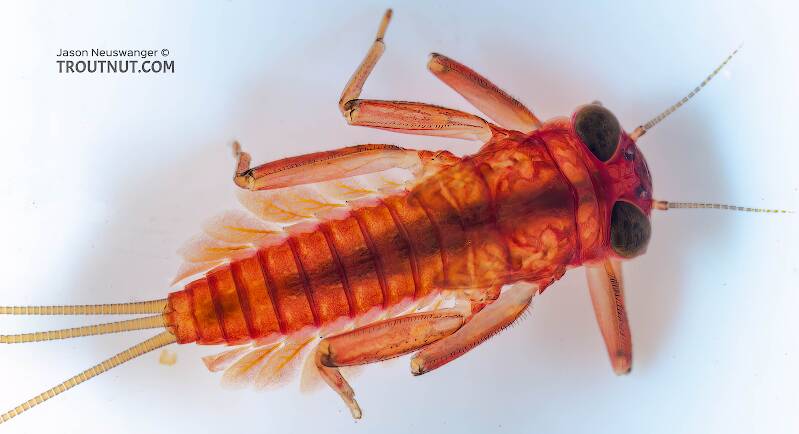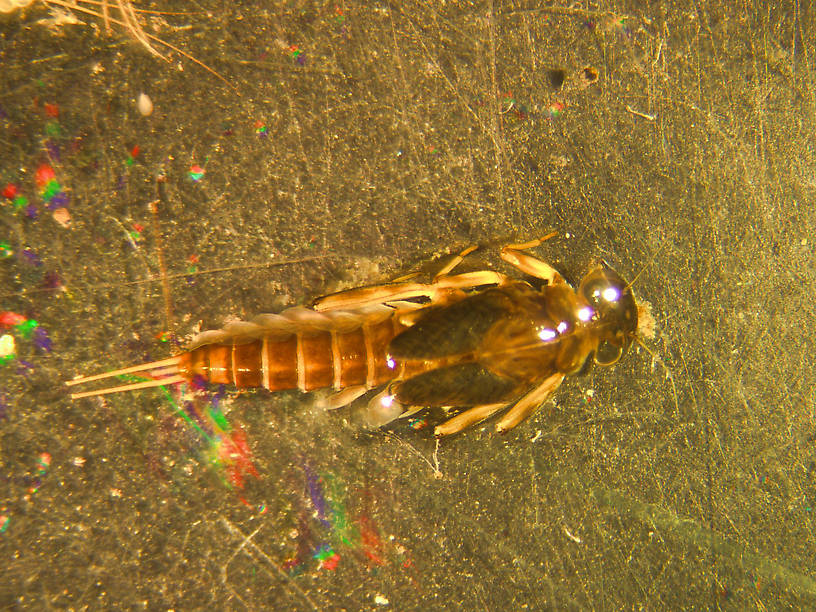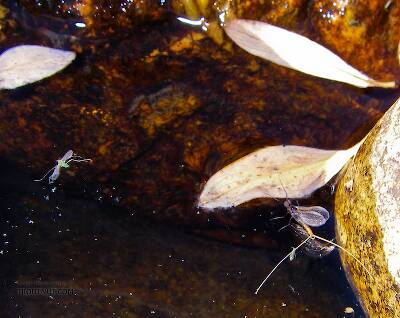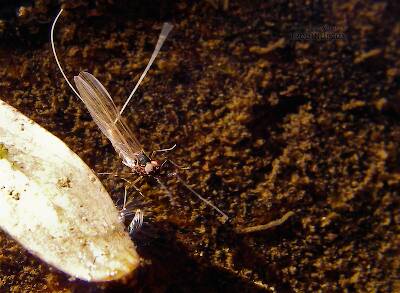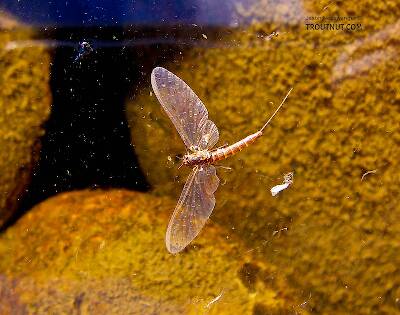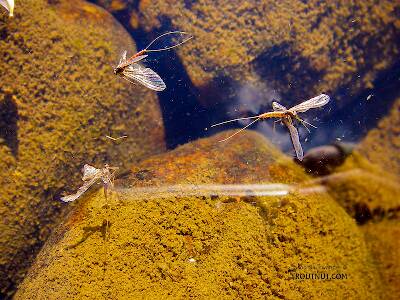
Salmonflies
Pteronarcys californica
The giant Salmonflies of the Western mountains are legendary for their proclivity to elicit consistent dry-fly action and ferocious strikes.


Mayfly Genus Cinygmula (Dark Red Quills)
There is only one Eastern species, Cinygmula subaequalis, and its importance is minor.
Where & when
I have found different Cinygmula species emerging throughout the summer and fall in Washington and Alaska.In 74 records from GBIF, adults of this genus have mostly been collected during June (36%), July (22%), May (15%), August (14%), and September (7%).
In 57 records from GBIF, this genus has been collected at elevations ranging from 240 to 10971 ft, with an average (median) of 4524 ft.
Genus Range
Spinner behavior
The angling literature suggests that Cinygmula spinner falls are too sporadic to be important, but I have seen Cinygmula par swarming in very good numbers, albeit on a small stream where hatch-matching wasn't needed because the hungry trout would hit anything anyway.Nymph biology
Cinygmula nymphs can withstand slower water than many of the other genera in the Heptageniidae family.Physical description
Most physical descriptions on Troutnut are direct or slightly edited quotes from the original scientific sources describing or updating the species, although there may be errors in copying them to this website. Such descriptions aren't always definitive, because species often turn out to be more variable than the original describers observed. In some cases, only a single specimen was described! However, they are useful starting points.
Male Spinner
Wing length: 9-10 mm
A medium-sized species, wings tinged with light grey, darker at bases; dark midventral ganglionic marks.
Thoracic notum light pitch-brown, “sometimes approaching light luteo-piceous anteriorly at the sides” (Eaton). Legs sooty to golden brown; base of fore femur and trochanter somewhat paler, base of first fore tarsal joint darker. Wings hyaline, “tinted with light bistre-grey throughout, but with a stronger tint than elsewhere” at the wing roots and in the stigmatic area; near wing roots the color becomes rather dark brown. Venation yellowish brown.
Abdominal segments 2-7 semi-hyaline; tergites largely light brown, the anterior ‘margins, antero-lateral areas, narrow median line and submedian streaks being hyaline, “dirty-whitish.” The three pale longitudinal streaks are outlined in darker color. Sternites paler, the ganglionic areas on 3-7 conspicuously marked with sepia-brown. Segments 8-10 opaque; tergites “Vandyke-brown,” sternites “very light brownish ochre” (Eaton). Tails brown. A large spine on lower outer margin of penes on each side, smaller spine on inner margin (see fig. 103).
This species is allied to both C. confusa and hyalina, also to the eastern C. atlantica. Distinguishing features are indicated under each of these species.
Specimens of the Mayfly Genus Cinygmula
3 Male Duns
7 Female Duns
12 Male Spinners
6 Female Spinners
13 Nymphs
4 Streamside Pictures of Cinygmula Mayflies:
Discussions of Cinygmula
Start a Discussion of Cinygmula
References
- Arbona, Fred Jr. 1989. Mayflies, the Angler, and the Trout. Nick Lyons Books.
- Caucci, Al and Nastasi, Bob. 2004. Hatches II. The Lyons Press.
- Jacobus, L. M., Wiersema, N.A., and Webb, J.M. 2014. Identification of Far Northern and Western North American Mayfly Larvae (Insecta: Ephemeroptera), North of Mexico; Version 2. Joint Aquatic Science meeting, Portland, OR. Unpublished workshop manual. 1-176.
- Knopp, Malcolm and Robert Cormier. 1997. Mayflies: An Angler's Study of Trout Water Ephemeroptera . The Lyons Press.
- Needham, James G., Jay R. Traver, and Yin-Chi Hsu. 1935. The Biology of Mayflies. Comstock Publishing Company, Inc.

